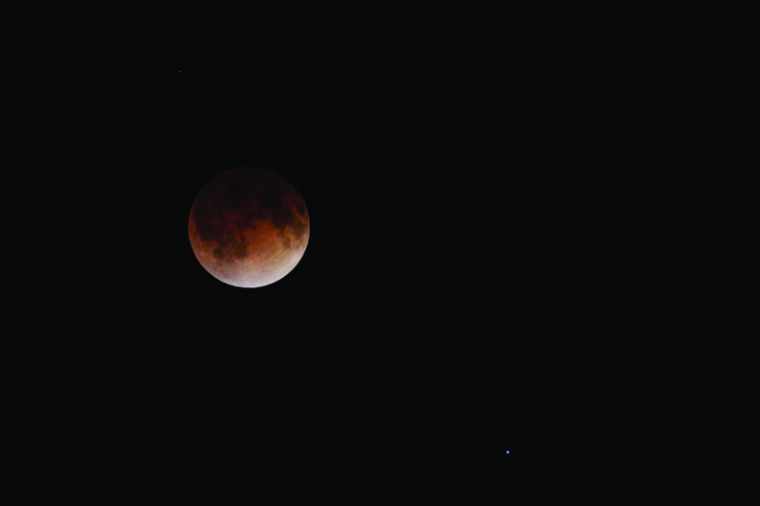Weather hampers eclipse viewing
The moon glows reddish-brown during a lunar eclipse on April 15, 2014. Students will get a free, hands-on experience to observe a supermoon lunar eclipse through a telescope Sunday in the NIU Observatory.
April 15, 2014
NIU’s observatory didn’t get the turnout it expected for its lunar eclipse showing due to snowy, cold weather Monday.
A total lunar eclipse only happens twice a year when the moon passes into the shadow of the Earth and turns a reddish-brown color, which lasts about three hours. This time, the eclipse was more visible for people who live on the west side of the earth. This type of eclipse can be more commonly known as a blood moon.
“If it wasn’t partly snowy and cold out, I was anticipating 700 to 1,200 people,” said observatory manager Daniel Stange of attendance at the observatory Monday. “And because of the weather I’m hoping to get [200] to [300], maybe 400 people, through.”
The observatory is run by NIU’s Astronomical Society and is organized by managers Stange, Matt Wiesner and Melissa Butner.
Before the observatory started showings for the eclipse, Wiesner gave presentations called All About Eclipses and Learn the Spring Constellations. The presentations focused on informing participants on what eclipses are and what constellations can be seen during the night.
“I’d want you to experience how awesome it is to be able to see this happening,” Wiesner said. “We predicted how this was going to happen right down to the second, and now we get a chance to watch it.”
Abigail Barrios, sophomore political science major, was one of the students at the presentation for extra credit in her Physics 162 class.
“I went to the observatory the other day and fell in love with it,” Barrios said. “The lecture was really informative. I really wish more students would come and take advantage of opportunities like this around school because I feel like students don’t.”
The session for observing the eclipse lasted from 9:30 p.m. to 6 a.m. with the best showing of the eclipse 2 to 3 a.m.
“Watching these kinds of celestial events, it’s like looking at mountains or oceans,” Wiesner said. “It reminds us of how little we are and how tremendous these things are. They are still awe-inspiring, and this is why we love space.”



